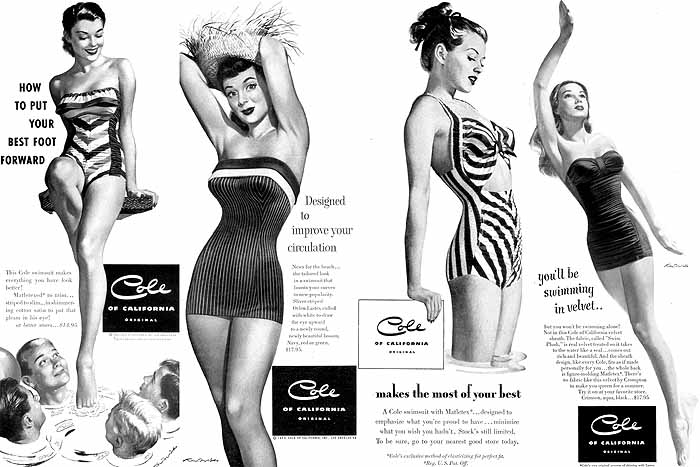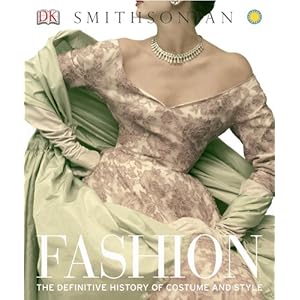YSL & Mondrian

In September 2011, I embarked on what would become a very long knitting project – completed this month, July 2012. It was titled “Mondrian Skyline” and can be found in The Ohio Mills Knitting Book. It appealed to me for a number of reasons – I could wear it, simple construction, easy fitting, but most importantly it appealed to my sense of fashion history.
 On August 2 1965, Yves Saint Laurent created a series of the color-blocked wool and jersey shift dresses, inspired by the Dutch Abstract Impressionist, Piet Mondrian, dubbed the ‘Mondrian Look.” With this design, YSL was capitalizing on the growing interest in minimalist and mod fashion of youth. Harper’s Bazaar referred to them as ‘the dress of tomorrow’ and quickly found their way into the mass-market.
On August 2 1965, Yves Saint Laurent created a series of the color-blocked wool and jersey shift dresses, inspired by the Dutch Abstract Impressionist, Piet Mondrian, dubbed the ‘Mondrian Look.” With this design, YSL was capitalizing on the growing interest in minimalist and mod fashion of youth. Harper’s Bazaar referred to them as ‘the dress of tomorrow’ and quickly found their way into the mass-market.

But, his Mondrian dresses were not as simple as they appeared. As Richard Martin and Harold Koda have noted, his genius was not only the artistic reference, but in using the color blocks to both accommodate the body and hide the seaming (this is, in fact where my knitted attempt failed – seaming is not my strong suit and my final product is a bit ‘wiggly’). This might be, because YSL’s dress was not actually ‘just’ a shift dress. It in fact, ‘boasts a defined shape and interior construction that allows the double-faced wool jersey to yield gently to the lines of the body. That structure is ingeniously hidden.” (Rubenstein, 128)
References:
Martin, Richard and Harold Koday. Haute Couture, New York : Metropolitan Museum of Art : Distributed by H.N. Abrams, 1995.
Mackrell, Alice. Art and Fashion: The Impact of Art on Fashion and Fashion on Art, London: Batsford, 2005.
Rubenstein, Hal. 100 Unforgettable Dresses, New York: Harper Desgin, 2011.
My CSA Western Presidency: The first three weeks
The last few weeks I’ve been busy with a number of projects – not the least of which is that as of July 1, I became President of the Western Region of the Costume Society of America. I’ve served on the Western Region Board for the last six years (2006) and became Programs Chair/President-Elect in 2010. The first few weeks, I’ve focused on sorting out board committee chair responsibilities (Tip: If you are a CSA Western member interested in getting more involved, now is the time to speak up!).

The Board also recently confirmed our new programs chair and president elect for 2012-2014 (congratulations Mary Gibson!), and other executive committee roles will be established soon.
Our next board meeting is in August, after the ‘Designing Women” program at the Autry (if you are interested in attending this behind-the-scenes tour on the opening weekend of the exhibition, the registration form is due July 28 – hurry!). I’ve been preparing Agenda items and learning as much ‘on the fly’ as possible, while at the same time trying to show Mary the ropes of being the programs chair.

In case you weren’t already aware, the 2013 CSA National Symposium will be held in the Western Region – in Las Vegas (May 29 – June 3, 2013). We’re excited to be hosting, and looking forward to what the symposium committee puts together. The call for papers is already up and available for those interested in presenting on the theme “Mining the History of Costume: Fantasy and Fact.”
Hope to see some of you at the Autry program on August 11!
That Medieval Bra Business…

I don’t know how many of you read the CSA “Communities for the Study of Dress and Fashion Forum” Listserve, but there was quite a lively discussion last week about the now well-known 15th century ‘lingerie’ found in an Austrian castle. The most commonly cited article being from the Daily Mail, By Dalya Alberge. Much of the discussion on the forum was about the vocabulary being used: “bra,” “lingerie,” and other phrases normally used to describe twentieth and twenty-first century undergarments (not to mention hyperbole and sensationalistic writing). Listserve writers complained about the loss of educational opportunity, as well as the lack of contextualization for these pieces.
This University of Innsbruk article on the find, provides a little more of the cut-and-dry information of what was found, but here again also only uses modern-day terms to describe the objects (aside from a passing reference to a “Mieder” (German for corselette).

The most informative article however, published a few days ago in the BBC History magazine, goes into considerable depth and provides a lot more context. That might be because it is written by Beatrix Nutz, a researcher at the Institute of Archaeology, University of Innsbruck (She is writing her thesis on the textiles from Lengberg). For example, Nutz explains:
There are some written medieval sources on possible female breast support, but they are rather vague on the topic. Henri de Mondeville, surgeon to Philip the Fair of France and his successor Louis X, wrote in his Cyrurgia in 1312–20: “Some women… insert two bags in their dresses, adjusted to the breasts, fitting tight, and they put them [the breasts] into them [the bags] every morning and fasten them when possible with a matching band.”
Nutz’s long, in-depth article is full of citations, quotes, and references – proving much more educational and satisfactory to this historian. She even provides the more accurate term, “breast bags” to describe the bra-like undergarments, and helps to fill in a lot of the gaps left by the more sensationalized articles. Hopefully, her work will seep into the general consciousness, despite its lack of sensationalism.
Feel free to leave your comments below.
San Francisco Silent Film Festival: today – July 15, 2012


Starting this evening, the San Francisco Silent Film Festival begins with a showing of Wings (1927) – a film about a lady aviator (or ‘flyer’) starring ‘it girl” Clara Bow. It is one of my favorite silent films, the story AND the costumes are great. Stella Dallas (1925), Mantrap (1926), Spanish Dancer (1923) and Pandora’s Box (1929) are some other favorites with great clothes and great characters. These — plus, the Mark of Zorro (1920) and The Cameraman (1928) with Buster Keaton–make this a killer line-up. The full list of films is below, do yourself a favor and go !
(More details are available here)
17th Annual
San Francisco Silent Film Festival
July 12-15 at the Castro Theatre, San Francisco
View the Full Program Now! Tickets & PassesNow on Sale!
| Thursday, July 12 |
7:00 pm | Opening Night Film WINGS (1927) |
| 9:30 pm | Opening Night Party at McRoskey Mattress Company |
|
| Friday, July 13 |
10:30 am | Amazing Tales from the Archives |
| 1:00 pm | LITTLE TOYS (1933) | |
| 4:00 pm | THE LOVES OF PHARAOH (1922) | |
| 7:00 pm | MANTRAP (1926) | |
| 9:15 pm | THE WONDERFUL LIE OF NINA PETROVNA (1929) | |
| Saturday, July 14 |
10:00 am | FELIX THE CAT SILENT CARTOONS (1925-1929) |
| 12:00 noon | THE SPANISH DANCER (1923) | |
| 2:30 pm | THE CANADIAN (1926) | |
| 5:00 pm | SOUTH (1919) | |
| 7:00 pm | Centerpiece Film PANDORA’S BOX (1929) |
|
| 10:00 pm | THE OVERCOAT (1926) | |
| Sunday, July 15 |
10:00 am | THE MARK OF ZORRO (1920) |
| 12:00 noon | THE DOCKS OF NEW YORK (1928) | |
| 2:00 pm | EROTIKON (1920) | |
| 4:30 pm | STELLA DALLAS (1925) | |
| 7:30 pm | THE CAMERAMAN (1928) |
Undergardments: 1920-1929

The boyish silhouette of the 1920s required special undergarments. Generally, a bandeau was used to flatten the bust with a single piece of fabric. Corsets and girdles were still heavily boned. Corset substitutes were made of softer elastic and referred to as “step-ins.” Specialty corsets were created for wear during sports, dancing, and even pregnancy. Towards the end of the decade, as a natural shape became more popular, brassieres with cups and mild shaping were developed.
Loose-fitting bloomers or knickers were made of silk or rayon and were gathered just above the knee. They came in a number of forms including one-piece camiknickers, teddy’s, step-ins, or just plain drawers (which resembled slightly flared, bifurcated skirts). During the early years of the 1920s, calf-length petticoats were worn, but as hemlines rose, these garments were rendered obsolete.
Laubner, Ellie. Fashions of the Roaring Twenties. Atglen, PA: Schiffer Publishing Co., 1996. 15-17
Mendes, Valerie and Amy De La Haye. 20th Century Fashion. London: Thames & Hudson, 1999. 65
Riordan, Teresa. Inventing Beauty, New York: Broadway Books, 2004. 87
Teaser Tuesday: Cole of California
I’m in Print! “Fashion: The Definitive History of Costume and Style”
Due out in October of 2012, Fashion: The Definitive History of Costume and Style (DK publishers) was a joy to be a part of this past April and May.
I contributed several sections – including some writing on mod fashion, 1950s ball gowns and cocktail dress, as well as section on 1970s women’s trousers. You can pre-order a copy on Amazon now and get $20 off…
July 4, 1933: Amelia Earhart in Los Angeles



